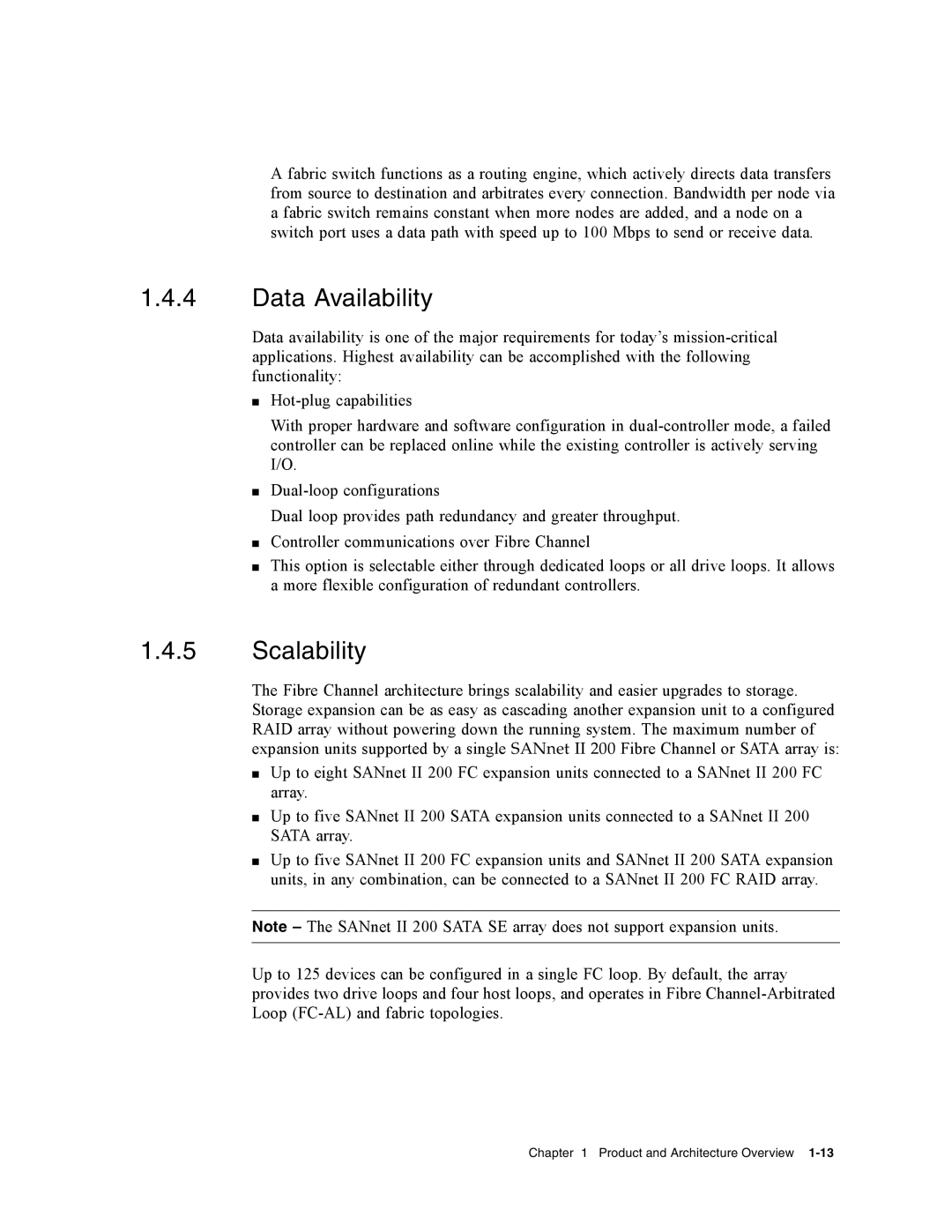A fabric switch functions as a routing engine, which actively directs data transfers from source to destination and arbitrates every connection. Bandwidth per node via a fabric switch remains constant when more nodes are added, and a node on a switch port uses a data path with speed up to 100 Mbps to send or receive data.
1.4.4Data Availability
Data availability is one of the major requirements for today’s
■
With proper hardware and software configuration in
■
Dual loop provides path redundancy and greater throughput.
■Controller communications over Fibre Channel
■This option is selectable either through dedicated loops or all drive loops. It allows a more flexible configuration of redundant controllers.
1.4.5Scalability
The Fibre Channel architecture brings scalability and easier upgrades to storage. Storage expansion can be as easy as cascading another expansion unit to a configured RAID array without powering down the running system. The maximum number of expansion units supported by a single SANnet II 200 Fibre Channel or SATA array is:
■Up to eight SANnet II 200 FC expansion units connected to a SANnet II 200 FC array.
■Up to five SANnet II 200 SATA expansion units connected to a SANnet II 200 SATA array.
■Up to five SANnet II 200 FC expansion units and SANnet II 200 SATA expansion units, in any combination, can be connected to a SANnet II 200 FC RAID array.
Note – The SANnet II 200 SATA SE array does not support expansion units.
Up to 125 devices can be configured in a single FC loop. By default, the array provides two drive loops and four host loops, and operates in Fibre
Chapter 1 Product and Architecture Overview
